
Publisher:
Bonnie King
CONTACT:
Newsroom@Salem-news.com
Advertising:
Adsales@Salem-news.com

~Truth~
~Justice~
~Peace~
TJP
Apr-06-2009 07:26

 TweetFollow @OregonNews
TweetFollow @OregonNews
Sole Survivor of Cape Lookout B-17 Crash in WWII, Wilbur Perez, Dies
Tim King Salem-News.comWilbur's survival of the 1943 crash was against all odds. He was severely injured, but recovered and went on to have a very productive and happy life.
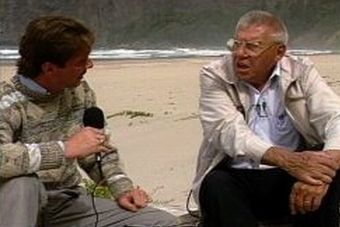 Tim King and Wilbur Perez during the recording of the television documentary Fallen Fortress at Cape Lookout. The half-hour program examined a historic WWII B-17 bomber crash that Perez alone survived. Photo: Dave Pastor |
(SALEM, Ore.) - A man whose life crossed paths briefly but significantly with Oregon history when his B-17 bomber crashed into Cape Lookout during World War Two, Wilbur "Buck" Perez, passed away Friday, March 20th, 2009 in Escondido, California.
I relate this news with genuine sadness; as one of the very few Oregonians who had the great fortune of knowing Wilbur Perez, the sole survivor of a 200 mile-per-hour plane crash that led to the deaths of nine men on a foggy morning in August 1943.
Working as co-producer, my wife Bonnie and I spent three years, from 1990 to 1993, researching the story of the Cape Lookout crash for the production of a television documentary that aired twice in 1993 on Oregon Public Broadcasting.
Short of newspaper coverage and a couple of magazine articles, little had been done to trace the story when we began our research in 1990. A few leads from Wayne Jensen at the Tillamook Pioneer Museum, and we were quickly moving on a fascinating journey that led us to Wilbur, and two of the men involved in his rescue from the crash that happened August 2nd, 1943.
When we rolled cameras for the documentary in 1992, our director of photography, Dave Pastor, and I spent days interviewing Wilbur and his wife Maude "Jerry" Perez, along with the gentlemen who were involved in his rescue.
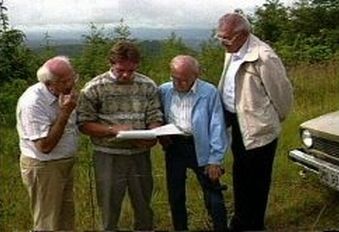 Carl Green, Tim King, Charles Schmid and Wilbur Perez |
Those men are Carl Green of Salem, Oregon, a Coast Guardsman during WWII who was part of the first search party to reach the crash site, and Charles Schmid of Arcata, California, an Air Warning Service guard who was the first person to report the plane crash.
The B-17 "Flying Fortress" bomber crash affected the three men in profoundly different ways. For Green, it was the regret in not finding Perez or the other crewmen when their search party initially reached the Cape. For Schmid, it was the frustration of his report of the crash not being taken seriously for hours.
"Buck" Perez
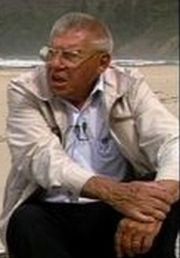 Wilbur Perez at Cape Lookout 49 |
Wilbur Lee "Buck" Perez was born March 24th 1918 in Belle Chasse, Louisiana. He grew up in Belle Chasse, which is located on the Mississippi River. He was the youngest of four children born to Aurelia (Rodeliot) and Elridge Perez.
Wilbur's father was involved in politics and worked closely with the famous Huey Long, the charismatic and immensely popular Louisiana senator and governor known for his social reform programs and willingness to take forceful action. Long was shot on September 8, 1935, at the Louisiana State Capitol in Baton Rouge. I was actually told Wilbur's father was Long's "right-hand man".
Wilbur's grandfather, according to historical records, was also an elected representative actively involved in Louisiana politics. He was an active member of his Ward's Democratic, Executive Parish Committee.
It makes sense that Wilbur Perez was anxious to do his part to serve his country, as Americans heard reports of Hitler's stormtroopers invading Poland and France in 1939 and 1940. He entered the Army Air Corps as an aviation cadet in September 1940, where he trained as a bombardier in the Boeing B-17 four-engine bomber.
During his time preparing for the war, Wilbur crossed paths and became acquainted with James Stewart, the Hollywood actor who would go on to fly at least 20 missions over Europe as a B-24 pilot. Wilbur talked about how serious Steward was about instrument calibration and having his plane in absolute top form.
2nd Lieutenant Wilbur Perez planned to go to the war in Europe to join the 8th Air Force, but just before completing training, his pilot, 2nd Lieutenant Roy Lee, failed to pass a flight check and in fact had an apparent argument with the flight performance evaluator. The crew was relegated back for more training.
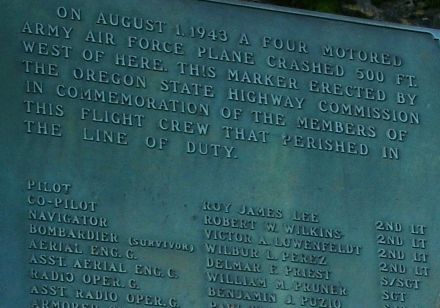 Plaque on Cape Lookout trail indicates location of crash site. Photo: Austin King |
The flight on August 2, 1943 followed more training and would ultimately be their last flight, but it was supposed to be their last flight before shipping off to Europe.
Wilbur and his crew were scheduled to join several other B-17's in a navigational training exercise from Pendleton Field to Cape Disappointment, Washington. They were supposed to be at 20,000 feet.
For some reason that Wilbur Perez never knew, Roy Lee was late for the pilot briefing the day of their last flight. The other aircraft in the training flight took off, and the plane piloted by Lee, 42-30326, a B-17f manufactured in Seattle, took off on its own to complete the same mission.
Wilbur said he never knew why they ended up lost in the fog, flying 50 to 100 feet off the water. That was the situation as the plane approached Cape Lookout, which rises 900 feet above the Pacific Ocean. The fog appeared thicker he said, so the pilot began climbing, but not soon enough.
"We only needed about fifty feet I think" Wilbur said during our interview in 1992. About two thirds of the plane stayed on top of the Cape, along with nine members of the crew. One man, and one third or so of the bomber, actually sailed off the south edge of the cape,
There is so much to the story that I can't express in a single article; we will try in the coming days to get a copy of the actual documentary published on Salem-News.com.
It is an astonishing story in that Wilbur's survival was against all odds. He was severely injured, but recovered and went on to have a very productive and happy life.
Recalling the violent crash was fulfilling for him I believe, and it also elicited a lot of sadness over the loss of his nine friends, which of course seemed very natural.
One hard part for him was that at least two of the other fliers survived the crash and lived for hours. Throughout the first day, Wilbur said one of the badly injured crewmen kept yelling out for what seemed like a long time, "Get me a taxi, get me an ambulance, get me out of here."
They laid there and eventually died of their injuries with no rescuers, in spite of the fact that the crash was instantly reported by Charles Schmid from his air warning tower on a mountain above Cape Lookout.
It frustrated Schmid fifty years later as he recalled the voice at the other end of the emergency phone saying, "We don't have any planes missing" to which he replied, "How could you, it happened less than one minute ago!" That pattern would continue for the next several hours. He kept calling the crash in, angering his superiors at the Portland Air Warning Service headquarters.
The crash happened mid-day August 2nd 1943. Later that night when the fog cleared, residents of Pacific City, Oregon spotted flames on the cape. That is when Carl Green and his team of Coast Guard searchers set out for Cape Lookout.
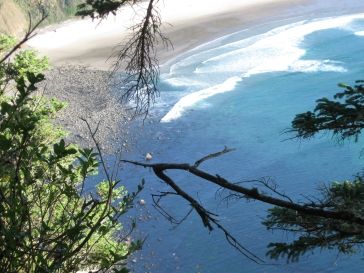 View from the area of the B-17 crash site down to the ocean below. |
They approached from the beach below, and reached the top of the rugged cape at 1:00 a.m. after climbing a small trail in this untamed wilderness. As they walked along the cape, Carl Green remembered nearly falling off the edge. Their dogs were nervous, the radios they carried were out of range and their flashlights began to die as they emerged into a field of twisted wreckage.
Green said he is certain they called out, but didn't find any survivors, or bodies for that matter. He told me they weren't even sure if it was an American plane.
Wilbur Perez position in the bomber was in the actual nose bubble. His left side was forward at the time of the crash and as a result, that side of his body was terribly injured, but his right side was fairly intact.
He said the nose of the plane was in between the large trees that began tearing the plane apart. He told me he thought for a millisecond, that he was flying through downtown Portland and the trees were the buildings going by. No such luck.
As the plane crashed, Wilbur recalled sailing through the nose bubble, flying through the trees, and being soaked with condensation, and flammable gas from the plane's ruptured fuel bladders. Within seconds of flying at 200 m.p.h. Wilbur found himself hanging upside down from a tree by a boot lace.
He told me he smelled the aviation gas, and then heard machine gun rounds going off. His initial thought was that a crewman was firing in an effort to call for help. He then spotted a fire in a tree, and he again noticed the aviation gas that he was soaked with.
He managed to get down to the ground by freeing the boot lace, and in an effort to get away from the fire, rolled slowly in the direction of the sound of the surf.
Amazingly, Wilbur Perez rolled right off the edge of Cape Lookout. He wasn't meant to die that day though, and he actually stopped descending down the nearly vertical cliff, as he landed on a propeller from the plane that had apparently tumbled and rolled right to the edge, but lacked the inertia to do more than get stuck in the muddy side of Cape Lookout a few feet from the top.
This is where Wilbur remained for the next 36 hours. He used his web belt to strap himself to the damaged propeller and listened to his crewmen's agony from a place where he couldn't see them, or help them.
After the interviews were recorded and the documentary aired, the rules changed under the Freedom of Information Act, and I was able to get unedited copies of the crash report documents. I learned several things that Wilbur had either forgotten, chosen not to reveal during the interview, or blocked out through the obvious Post Traumatic Stress that anyone would suffer after survivin such an event.
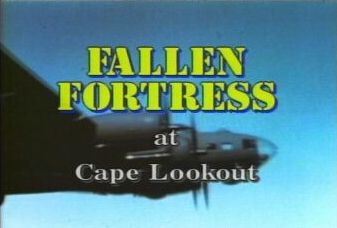
I think it took a while, but Wilbur was able to move on from this violent experience. He actually spent the rest of his time in the Army Air Force investigating airplane crashes. He left the service in April 1946 after reaching the rank of Captain.
After the war, he and his wife, Maude, settled in Denver, Colorado. In July 1955 they adopted a son, Kenneth David. They were long time parishioners of St. James Parish, where Kenneth attended school.
Wilbur worked 30 plus years as an appliance salesman for Sears. Upon retirement, he volunteered for the Red Cross as a driver and later for PBS Channel 6 giving tours of the studio.
In 2004, Wilbur and Maude moved to Fairwinds Ivey Ranch in Oceanside, California, to be closer to their son, Ken and his family.
Wilbur was a wonderful man who lived an honorable life. He will be greatly missed. Wilbur was preceded in death by his wife, Maude Perez (Sappington); mother, Aurelia; father, Elridge; sister, Gertrude Hunter; and brothers, Elridge Jr. and Kenneth.
He is survived by his son, Kenneth; daughter-in-law, Denise; three grandchildren, Parker, Amanda and Hunter; cousin, B. J. (Viola) Perez of Hammond, La.; niece, Leah Giraud of New Orleans, La,; nephews, Miles Perez, Bruce Perez of New Orleans, La., and Lenny Perez of Hammond, La.
There was a private burial at the Mission San Luis Rey Cemetery in Oceanside, California. You can sign the Guest Book online obits.nctimes.com
Consistent with his generous nature, Wilbur Perez was happy to share his story with Oregon viewers and when Fallen Fortress at Cape Lookout aired September 3rd 1993 on OPB, its Nielson Rating clearly indicated that people here cared to learn the facts behind the Cape Lookout crash.
Again, I look forward to posting the actual half-hour OPB documentary on the story of Wilbur Perez and the B-17 plane crash, which we titled Fallen Fortress at Cape Lookout.
For our story on the commemoration of the 60th anniversary from August 2nd 2008, of the Cape Lookout B-17 crash, visit this link: Today is the Sixty Fifth Anniversary of Oregon's Cape Lookout B-17 Bomber Crash - Tim King Salem-News.com
-----------------------------------------------------
----------------------------------------------------- Tim King is a former U.S. Marine with twenty years of experience on the west coast as a television news producer, photojournalist, reporter and assignment editor. In addition to his role as a war correspondent, this Los Angeles native serves as Salem-News.com's Executive News Editor.
Tim King is a former U.S. Marine with twenty years of experience on the west coast as a television news producer, photojournalist, reporter and assignment editor. In addition to his role as a war correspondent, this Los Angeles native serves as Salem-News.com's Executive News Editor.
Tim spent the winter of 2006/07 in Afghanistan with Oregon troops. Tim recently returned from Iraq where he covered the war there while embedded with an Oregon Guard aviation unit. Serving the community in very real terms, Salem-News.com is the nation's only truly independent high traffic news Website, affiliated with Google News and several other major search engines and news aggregators.
You can send Tim an email at this address: newsroom@salem-news.com
Articles for April 5, 2009 | Articles for April 6, 2009 | Articles for April 7, 2009

Quick Links
DINING
Willamette UniversityGoudy Commons Cafe
Dine on the Queen
Willamette Queen Sternwheeler
MUST SEE SALEM
Oregon Capitol ToursCapitol History Gateway
Willamette River Ride
Willamette Queen Sternwheeler
Historic Home Tours:
Deepwood Museum
The Bush House
Gaiety Hollow Garden
AUCTIONS - APPRAISALS
Auction Masters & AppraisalsCONSTRUCTION SERVICES
Roofing and ContractingSheridan, Ore.
ONLINE SHOPPING
Special Occasion DressesAdvertise with Salem-News
Contact:AdSales@Salem-News.com


Salem-News.com:

Terms of Service | Privacy Policy
All comments and messages are approved by people and self promotional links or unacceptable comments are denied.
[Return to Top]
©2025 Salem-News.com. All opinions expressed in this article are those of the author and do not necessarily reflect those of Salem-News.com.